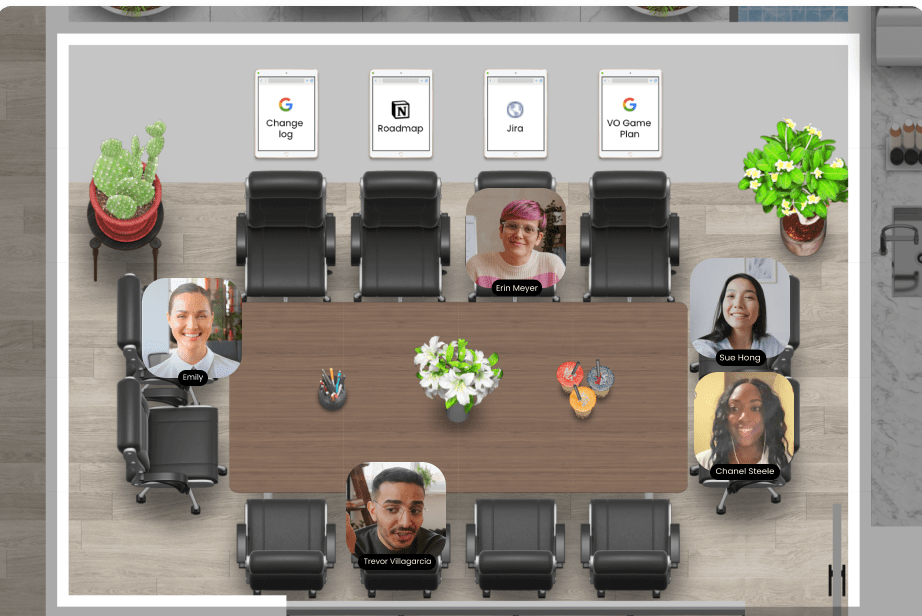Are you looking for a fresh way to boost productivity and foster a culture of learning in your organization? Look no further than lunch and learn programs – a fantastic opportunity to combine informal learning and socializing during lunchtime. Let’s dive into the world of lunch and discover how they can help employees acquire new skills, strengthen team bonds, and ultimately maximize productivity.
Key Takeaways
- Lunch and Learn Programs are an effective way to provide informal training & discussion that can contribute to employee growth.
- Brown Bag Connections create open dialogue & idea-sharing for improved morale & company learning culture.
- Maximize the impact of your program by encouraging employee involvement, using feedback, and selecting relevant topics.
Defining lunch and learn

Lunch and learn programs, sometimes referred to as brown bag meetings, are an ingenious way to make the most of employees’ lunch breaks by offering informal training sessions or discussions on various topics during their lunch break. Lunch and learn programs, through their focus on skill development and knowledge expansion, avoid disrupting employees’ professional growth. With a wide range of potential topics, from software and productivity to leadership and presentation skills, there’s something for everyone to gain from these events.
Now that we’ve established the basics, let’s explore the brown bag connection and the possibilities for remote lunch and learn events to better understand how this concept can fit into any organization’s culture.
The brown bag connection
Brown bag sessions are similar to lunch and learns, with one key difference: attendees bring their own lunch to these informal meetings, often packed in the eponymous brown paper bags. These sessions can take various forms, such as seminar meetings, small group meeting discussions, or even social brown bag meeting gatherings focused on team building. The beauty of brown bag meetings lies in their versatility and ability to spark conversations, spread information, and foster collaboration among team members.
A successful brown bag session requires a relaxed environment and a well-structured plan, bolstered by tools like Fellow for seamless facilitation. By promoting open dialogue and idea-sharing in a relaxed setting, brown bag meetings can greatly enhance a company’s learning culture and employee morale.
Remote lunch and learn possibilities
As remote work becomes commonplace, it’s critical to address the needs of remote employees to allow them to partake in the enriching experiences offered by lunch and learn events. Platforms like Kumospace make it easy to facilitate remote lunch and learn events focused on enhancing remote productivity and keeping teams connected.
Organizations that host remote-accessible lunch and learn events can enhance their remote teams’ productivity and bring in guest speakers to impart valuable insights and life skills. Ensuring that remote workers can participate in social brown bag meetings through audio and video conferencing or recorded sessions is crucial for maintaining an inclusive and accessible learning culture.
Benefits of implementing a lunch and learn program

Implementing a lunch and learn program offers numerous benefits to an organization, without consuming too much time or resources since events take place during lunch breaks. One significant perk is fostering a learning culture, which can help employees stay updated on industry trends and develop essential professional skills. Furthermore, lunch and learn programs can promote teamwork, as employees from various departments come together to share ideas and learn from one another.
In addition to these benefits, providing a free lunch during lunch and learn events is a thoughtful way to show appreciation for employees’ hard work, while also allowing them to enjoy a break from bringing their own food. By making sure to accommodate diverse dietary needs and preferences, organizations can ensure that everyone feels included and valued, boosting employee morale and satisfaction.
Essential elements for a successful lunch and learn

To make your lunch and learn program a resounding success, you need to pay attention to three key elements: selecting relevant topics, inviting a guest speaker for delivering engaging presentations, and ensuring inclusivity and accessibility for all participants.
Let’s delve into each of these crucial components in more detail.
Topic selection
The selection of pertinent topics for your lunch and learn events forms the backbone of maintaining participant engagement and relevance. To achieve this, consider basing topic selection on employee interests, industry trends, and organizational goals. One effective way to gather topic ideas is to survey the team and let them vote on their favorites, ensuring that the most popular topics are scheduled for upcoming sessions.
Some popular lunch and learn topics include:
By offering a diverse range of topics that cater to various employee interests and needs, organizations can ensure continued enthusiasm and participation in their lunch and learn program.
Engaging presentation
To captivate attendees and ensure they remember the key takeaways, presentations must be designed to be engaging. To create captivating presentations, consider incorporating interactivity, brevity, and visually appealing elements. Some tips for enhancing engagement include using icebreakers, keeping content straightforward, involving the audience, adding humor, making eye contact, and starting with a personal anecdote.
By delivering interactive, concise, and visually appealing presentations, presenters can create an engaging learning experience that leaves a lasting impact on attendees, ultimately maximizing the effectiveness of your lunch and learn program.
Inclusivity and accessibility
Inclusivity and accessibility play a vital role in the success of any lunch and learn program, ensuring that everyone feels welcome and can fully participate in the learning experience. To prioritize inclusivity and accessibility, consider accommodating remote workers, providing various learning formats, and addressing diverse learning needs.
By being mindful of these factors and taking active steps to create a comfortable and accessible learning environment, organizations can foster a more inclusive culture and ensure that all employees can benefit from the valuable knowledge and insights offered through lunch and learn events.
Planning and executing a lunch and learn event

When it comes to planning and executing a successful lunch and learn event, three key aspects must be considered: setting clear objectives, managing logistics and venue, and ensuring effective facilitation and time management.
Let’s explore each of these components in more detail.
Setting objectives
Setting distinct objectives for your lunch and learn event helps define its purpose and the anticipated outcomes. Objectives serve as a guiding force throughout the planning process and provide a measure of success upon completion of the event. The primary goals of a lunch and learn event typically revolve around building professional skills, sharing knowledge, and fostering a positive work culture.
By setting well-defined objectives, organizers can ensure that their lunch and learn events remain focused and purposeful, providing employees with valuable learning experiences that contribute to both personal and organizational growth.
Logistics and venue
Organizing a lunch and learn event necessitates thoughtful consideration of logistics and venue, including factors like location, technology, and catering, to foster a comfortable and engaging ambience. Suitable venues for lunch and learn events include canteens, atriums, breakout spaces, conference rooms, or even virtual platforms for remote teams.
In addition to selecting the ideal location, ensure that the necessary technology, such as audiovisual equipment or presentation materials, is available and functional. Catering should also be taken into account, offering a variety of options to accommodate diverse dietary needs and preferences, as well as creating an inviting atmosphere for learning and socializing.
Facilitation and time management
A successful lunch and learn event hinges on effective facilitation and time management, which uphold focus, stimulate participation, and honor attendees’ time. Maintaining a strict time limit is crucial, as lunch and learn events typically should not exceed an hour in duration to respect employees’ lunch breaks.
An experienced facilitator should guide the session, ensuring that discussions remain on topic and that all participants have the opportunity to contribute their thoughts and ideas. By managing time efficiently and facilitating meaningful discussions, organizers can create a productive and enjoyable learning experience for all attendees.
Maximizing the impact of your lunch and learn program

For your lunch and learn program to reach its maximum potential, it’s paramount to foster employee involvement and refine the program continually based on feedback. Let’s explore some strategies for achieving these goals.
Encouraging employee involvement
One effective way to encourage employee involvement in lunch and learn events is to:
- Promote the events through various communication channels, such as email or social media
- Solicit topic suggestions from team members
- Allow employees to vote on their favorite topics
- Encourage employees to present or facilitate sessions
By doing so, you can foster a sense of ownership and engagement among employees, ultimately leading to improved productivity and better results.
By actively involving employees in the planning and execution of lunch and learn events, organizations can create a more dynamic and engaging learning experience, ensuring that the program remains relevant and valuable to all participants.
Continuous improvement
Collecting feedback from attendees is crucial for continuously improving your lunch and learn program and enhancing the overall experience. By creating a quick online form or survey, organizers can gather valuable insights and suggestions from participants, identifying areas for improvement and making adjustments accordingly.
Regularly evaluating and updating the program based on feedback and evolving needs can help ensure that your lunch and learn events remain engaging, informative, and impactful for all employees, ultimately maximizing the benefits of the program for both individuals and the organization as a whole.
Maximizing Remote Productivity: Lunch and Learn with Kumospace

To maximize productivity with a remote lunch and learn program, organizations can leverage virtual office platforms like Kumospace. Kumospace provides a dynamic and interactive virtual environment that facilitates remote collaboration and events.
With Kumospace, you can create virtual spaces where remote teams can gather for lunch and put on events, fostering a sense of connection despite physical distances. The platform allows for easy integration of audio and video conferencing features, making it seamless to host presentations, discussions, and even social brown bag meetings in a virtual setting. The interactive nature of Kumospace enables participants to move around and engage in small group discussions, closely simulating the in-person experience. By utilizing Kumospace for remote lunch and learn events, organizations can overcome the challenges of virtual collaboration and create a vibrant online learning culture that maximizes productivity and team cohesion.
Summary
In conclusion, lunch and learn programs offer a powerful and efficient way to maximize productivity, foster a learning culture, and promote teamwork within an organization. By focusing on essential elements such as topic selection, engaging presentations, and inclusivity, as well as carefully planning logistics and encouraging employee morale, organizations can create impactful and enjoyable lunch and learn experiences. With continuous improvement and adaptation, lunch and learn programs can become an invaluable tool for personal and professional growth, driving success for both employees and the organization as a whole.
Frequently asked questions
A Lunch & Learn or Learning Lunch are just other names for a knowledge sharing event. These events don't always take place over lunch and they're usually rescheduled, so nobody ends up eating.
Lunch and learns are short training-focused programs during lunchtime, providing an opportunity for employers to introduce new concepts or strategies or to discuss key topics. They bring together people from across the organization in a casual atmosphere to learn and collaborate, while providing food for attendees.
Lunch and learns are a great opportunity for employees to come together in an informal setting, collaborate, learn, and develop their personal, team, and business skills.
A "lunch and learn" is an informal professional meeting or training session during lunch, which is usually paid for by the company. Participants come together to collaborate and learn, and it can drive personal, team and business development. It's a great way to discuss topics like employee well-being or to present new strategies or concepts.
The primary purpose of a lunch and learn program is to provide employees with opportunities to learn new skills and information during their lunch breaks, fostering a learning culture and promoting teamwork.





